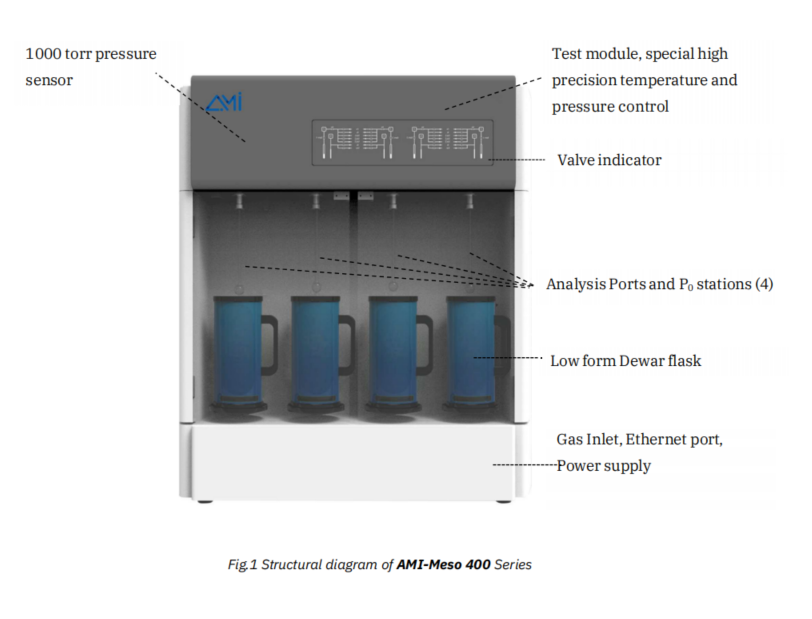- The AMI-Meso 400 is a compact, high-performance sorption analyzer designed for the precise characterization of mesoporous and macroporous materials. Equipped with four fully independent analysis stations, it enables the determination of BET surface area, total pore volume, and pore size distribution with maximum efficiency.
- Each analysis station features an individual dosing volume, allowing fully autonomous operation with independent programming and initiation at any time—eliminating downtime between analyses. This design ensures highly reproducible results and optimized throughput.
- The AMI-Meso 400 supports a wide range of non-corrosive adsorptive gases, including N2, CO2, Ar, Kr, H2, O2, CO, NH₃, and CH4, providing exceptional flexibility for various research and industrial applications. Additionally, all four stations function as in-situ degassing units, enabling efficient sample preparation within the same system.
Advanced Measurement Instruments
Copyright 2004–2024 ami-instruments.com

 Products
Products
 Products
Products













 TEL: +1 262-877-3600
TEL: +1 262-877-3600
 EMAIL:sales@ami-instruments.com
EMAIL:sales@ami-instruments.com